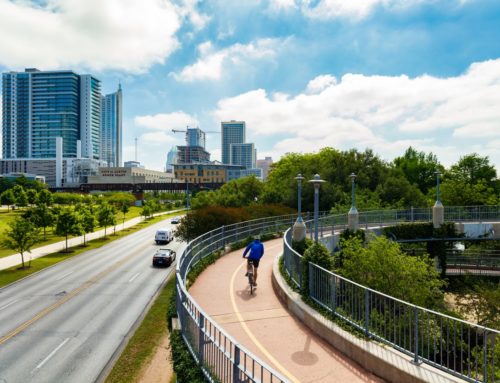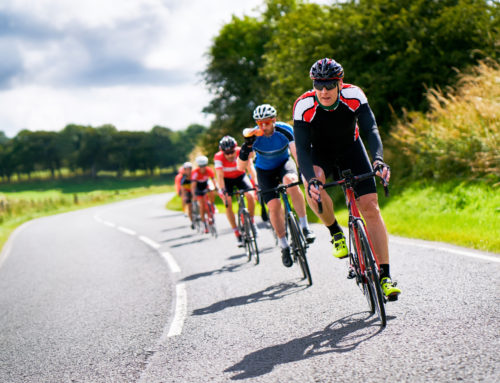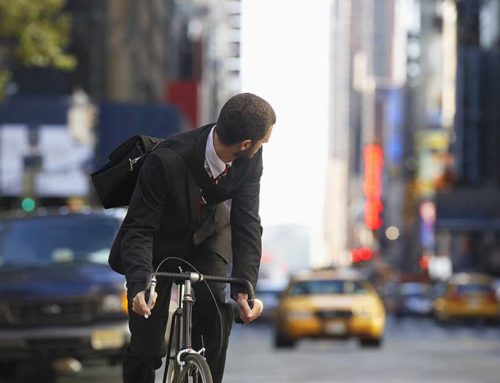The number of bicyclists has increased since the COVID-19 pandemic began. You may see more bicycles sharing the road and sidewalk than ever before. However, the risk of bicycle accidents also increases with a greater number of riders on the road.
One issue that many bicyclists face is whether to ride on the road or sidewalks. What are the rules about riding on sidewalks? Who has the right of way on sidewalks – pedestrians or bicyclists? Is it safer to ride in the street or on the sidewalk?
Let’s look at some issues regarding bicycles and sidewalks.
Should Children Ride on the Road or on a Sidewalk?
Many parents prefer that their children ride on sidewalks whenever possible because they believe that sidewalks are safer. According to the NHTSA, the safest place for bicycling is on the street, where bicycles are expected to follow the same traffic rules as motorists.
However, children under the age of 10 years are generally not mature enough to make safe decisions that allow them to ride on the road. Therefore, children under 10 are safer riding on the sidewalk.
Before you allow your child to ride on the sidewalk, you need to check your state and local bicycle laws to determine if it is legal to ride on the sidewalk in your area. Also, make sure to talk to your child about bicycle safety, even if they are able to ride on the sidewalk.
Teach your child to look closely for vehicles backing out of and turning into driveways. Kids should stop at corners to look for cars before crossing the road.
Use a bell or horn to alert pedestrians that you are approaching from behind on a bicycle. It is also wise to tell the pedestrian you are passing on the left or right as you approach them.
Five Things Adults Need to Know About Riding Bicycles on Sidewalks
Five issues that bicyclists need to be aware of when they are riding on the sidewalk include:
1. Pedestrians Generally Have the Right of Way
Check your local laws to confirm who has the right of way on the sidewalk. Generally, sidewalks are made for walking. Therefore, pedestrians often have the right of way.
If you are riding on the sidewalk, use your bell or horn to alert pedestrians you are approaching. Also, tell pedestrians you are passing on the left or right so that they can move over to avoid a collision.
2. Sidewalks Can Be Dangerous for Cyclists
Sidewalks might appear to be the safer option, but that is not always the case. Cracks and uneven sections of concrete can cause a bicycle accident. Cars entering and exiting driveways are also dangerous because these motorists are typically not looking for a bicycle when they enter or leave their driveway.
3. Transitioning to Crosswalks Can Be Dangerous
Motorists may be looking out for pedestrians entering crosswalks, but they may not be watching for cyclists traveling 10 to 20 mph entering the crosswalk.
Therefore, cyclists need to stop before entering the roadway to check for oncoming traffic. Also, there could be uneven sections of pavement that could cause a cyclist to wreck when transitioning from the sidewalk to the crosswalk or vice versa.
It may be safer to walk a bicycle across a busy intersection than to ride it across the street, especially when crossing several lanes of traffic with pedestrians.
4. Ride at a Walking Speed
If you ride on the sidewalk, riding at a walking speed is the safest option. Going slower allows you to stop for motor vehicles and pedestrians to avoid a crash. It also reduces the risk of a bicycle accident caused by hazards and sidewalk conditions.
5. Sidewalks Are Not the Best Choice for Exercising
If your goal for riding your bicycle is to exercise and stay in shape, sidewalk cycling is generally not the best choice. Riding on the sidewalk means slowing down and stopping more often. Therefore, you do not get as good of a workout as you would if you cycled on the road or a bicycle trail.
What Should You Do if You Are in a Bicycle Accident on the Sidewalk?
Treat the accident the same way you would a bicycle accident on the road. Report the bicycle accident to the police and seek medical attention for your injuries.
It is also a good idea to talk with a bicycle accident lawyer. There could be disputes related to the right of way and liability for damages. A bicycle accident lawyer can explain your legal rights and the steps you should take to protect your best interests.
See our benchmarking report or contact us for more information.















Leave A Comment